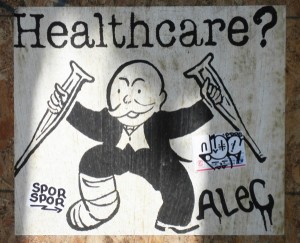
I’ve talked about that here and in even more depth on the Cancer for Christmas blog over the last few years. This “chaos behind a veil of secrecy” (all credit for that phrase belongs to healthcare economist Uwe Reinhart) has created the impression in healthcare customers that there’s no way to tell what something will cost before you buy it. You checks the box and takes yer chances. That’s a rotten way to run a railroad (one of the original monopoly industries in modern history), and an even worse way to run a hospital.
Dan Munro wrote about this, and the star-chamber cabal that actually sets the prices in healthcare, the RUC, on Forbes.com yesterday. I’ve talked about the RUC myself. And the search for price transparency, which seemed such an outlier activity just a couple of years ago, is now popping up in the Well blog on the New York Times site, as well as on Reuters. The Reuters piece has the addition bonus of quotes from my buddy Jeanne Pinder, founder of ClearHealthCosts.com. (Yesterday was a big day in medical price transparency.) This is the central reason I registered the hashtag #howmuchisthat with Symplur, the healthcare hashtag registry.
We all have to start demanding that prices be visible, and that the RUC stop cabal-ing around with our lives and our wallets. As more and more people are finding themselves with high-deductible health insurance, asking how much things cost before you make a healthcare decision will become the norm. If a healthcare provider can’t answer that question, s/he will find that s/he’s seeing the patient panel sinking fast, along with practice revenue.
Get with it, medicine. Remake your image, and your brand, to be clear as glass and user-friendly. Outcome metrics along with pricing would be really nice, too.